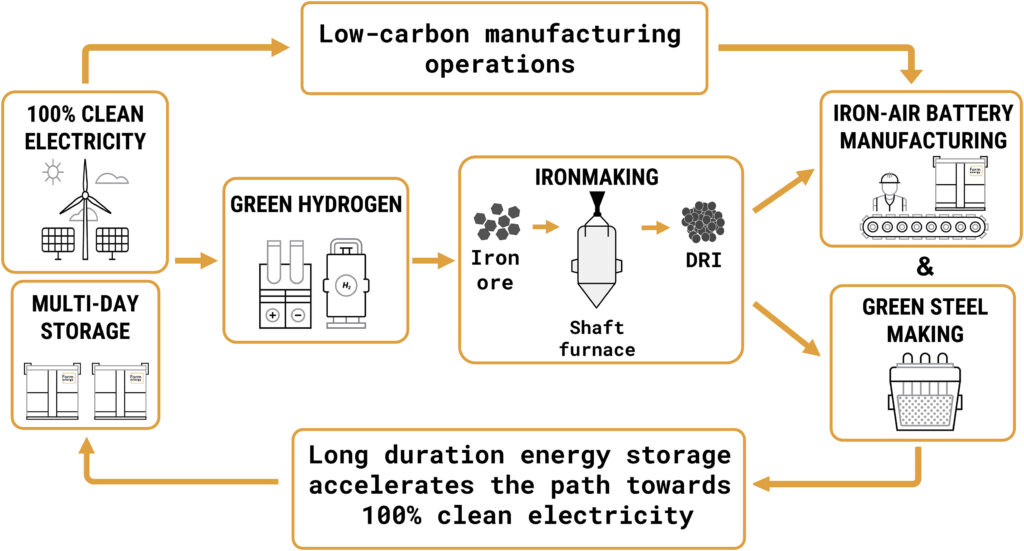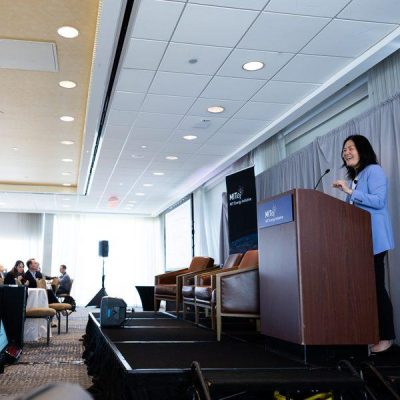To DMSE alum, energy transition doesn’t stop with electricity
At this point in time, there’s no longer a need to ask why scientists and engineers are working to mitigate climate change, said William Woodford, CTO of startup Form Energy. Woodford gave a talk March 24 on how he chose to tackle the problem: improving multi-day energy storage capabilities.
“We absolutely have to decarbonize, and material science solutions, material science innovation, are going to be central to our ability,” Woodford said during the spring 2023 Wulff Lecture. The DMSE lecture series is designed to get students excited about materials science and engineering.
Electricity generation is the second-highest carbon emissions producer. While the world still relies on fossil fuels to generate electricity, renewable energy is now the fastest-growing energy source globally and in the United States.
To run the grid reliably and affordably, new energy storage technologies are needed that can store electricity for multiple days, when there’s no wind or sun, during long periods of extreme weather, or during grid outages.
That’s what motivated Woodford, a DMSE alum, to co-found Form Energy and begin investigating possible solutions. The company’s commercial product is a rechargeable iron-air battery, which can store electricity for 100 hours—but when the company was founded, the type of battery was not particularly important; the challenge was to enable a reliable decarbonized electric system. “We didn’t start the company as an iron-air battery company,” Woodford said. “We started it as a company to go after the problem of multi-day storage.”
To decide on what type of battery could cost-effectively store energy generated by wind and solar plants over several days, Woodford and his team reviewed several candidates from previous battery research. They chose an iron-air chemistry because of the low cost of materials, reasonable energy density—the amount of energy a battery can store—and cycle longevity, or how many times the battery can charge and discharge before losing performance. Iron-air batteries also have tremendous potential to scale.
“There’s a lot of iron,” Woodford said. “It’s available on every continent except Antarctica. So if you think about the global need for this—this is a technology that can be scaled and deployed all around the planet.”
Woodford’s goal is to create power plants by combining shipping container-sized units with multiple iron-air battery modules that can be assembled like building blocks.
But iron-air batteries aren’t a “silver bullet” for all applications, he said. Because of their weight, along with other variables, they don’t do so well in smaller-scale applications such as vehicles.
Woodford connected his company’s battery making to another industry in need of decarbonization: steelmaking, which represents about 5 percent of carbon-dioxide generation.
He envisions a virtuous cycle: Form Energy’s iron-air batteries fuel the making of green hydrogen, or hydrogen produced using renewable energy. Through a process called direct reduction, green hydrogen can convert iron ore into usable iron for Form Energy’s batteries—and the broader iron and steel industry—with zero emissions (if the hydrogen itself is zero-emissions).
“Have lower-cost hydrogen to make more batteries with, have lower-cost hydrogen to make more steel with,” Woodford said.
Woodford recalled the exact moment he decided to go into batteries. When he was a first-year graduate student at MIT, he attended a seminar by Ely Sachs, a professor of mechanical engineering known for his work on alternative energy. Sachs said that solar power would be limited not by solar technology but by energy storage. “I was like, ‘Aha—this is why I should work on batteries.’”
For the budding materials scientists in the audience, he had a different message: “Don’t work on batteries; go figure out these other hard things,” referring to transportation, commerce, construction, and other sectors—all need to move away from energy systems that produce greenhouse gases. Such effort will require dedicated, creative focus, Woodford said.
“We’ve got to have another generation really focused on, How do we go decarbonize all of these other materials and other processes?”




